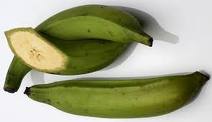The Monkey Puzzle tree is an evergreen, native to Southern Chile and South West Argentina where it was prized for its timber. However it is now a protected endangered species under the Convention on International Trade in Endangered Species (CITES). Logging caused the destruction of this tree which has been called “a living fossil”. It has been around for 250 million years or so and is very distinctive. It has sharp needle like leaves which were described as being like “hypodermic syringes” by locals in West Cross, Swansea Wales UK who believed that a 150 year old tree should be felled as it was dangerous for children; probably a case of health and safety concerns gone mad.
 These trees can live for 1,200 years and are resilient to dangers from volcanoes, landslides, winds and wild fires in their native habitat. It is thought that they developed their sharp leaves in order to deter grazing dinosaurs, as they have been around since the Mesozoic Age. The leaves are scale-like and the trunk is scaly and ridged with diamond patterns, which make it resemble the outer hard casing of a pineapple. If you make an incision in the trunk a resin will freely exude which is used to heal wounds and ulcers by the indigenous people in its natural habitat.
These trees can live for 1,200 years and are resilient to dangers from volcanoes, landslides, winds and wild fires in their native habitat. It is thought that they developed their sharp leaves in order to deter grazing dinosaurs, as they have been around since the Mesozoic Age. The leaves are scale-like and the trunk is scaly and ridged with diamond patterns, which make it resemble the outer hard casing of a pineapple. If you make an incision in the trunk a resin will freely exude which is used to heal wounds and ulcers by the indigenous people in its natural habitat. The Pehuenche people revere this tree and it is decorated during their two-day long harvest festival and stands in the altar while the potent prayers are said for the bounty of the earth to continue. The timber from the tree was used for carpentry and joinery and is a pale yellow which can be highly polished. Unscrupulous logging concerns almost eradicated this tree in its native habitat until the indigenous peoples made a stand to protect it.
The Pehuenche people revere this tree and it is decorated during their two-day long harvest festival and stands in the altar while the potent prayers are said for the bounty of the earth to continue. The timber from the tree was used for carpentry and joinery and is a pale yellow which can be highly polished. Unscrupulous logging concerns almost eradicated this tree in its native habitat until the indigenous peoples made a stand to protect it. There are many of these trees planted in Britain
 The trees are believed to have found their way to
The trees are believed to have found their way to It is said that the tree got the name Monkey Puzzle tree when a visitor who went to view a tree planted by Sir Joseph Banks, the unofficial director of Kew Gardens
 I remember a Monkey puzzle tree in the grounds of a chapel in the small town where I grew up and was always fascinated by it. It was so huge to me and I could watch the birds look for nuts below the tree. They didn’t seem perturbed by the needles. It was a dark, shady tree and crows made their nests in it, which is why it might be associated with bad luck in some places, I assume. Incidentally, Araucaria was also the name of my favourite cryptic crossword puzzle setter in the UK's The Guardian newspaper
I remember a Monkey puzzle tree in the grounds of a chapel in the small town where I grew up and was always fascinated by it. It was so huge to me and I could watch the birds look for nuts below the tree. They didn’t seem perturbed by the needles. It was a dark, shady tree and crows made their nests in it, which is why it might be associated with bad luck in some places, I assume. Incidentally, Araucaria was also the name of my favourite cryptic crossword puzzle setter in the UK's The Guardian newspaper It is a member of the Araucariaceae family and it is said that
It is a member of the Araucariaceae family and it is said that These trees are also called Chilean pines and other Latin synonyms for them are Araucaria imbriata and Pinus araucaria. You can’t miss them as they have a loose pyramid shape and really are “living fossils.”




















